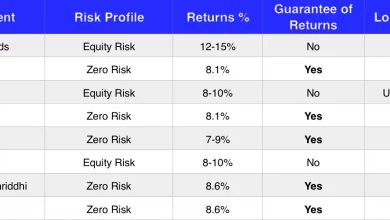How Much is the Rate of Interest of EPF in India?

EPF or Employees Provident Fund is a mandatory savings program for workers. Contributions are divided into two, from workers and employers. One of the goals of the EPF is for a pension fund that workers can enjoy in their retirement. However, as long as they pay EPF contributions, workers have the choice to determine the use of contribution funds. For some countries which use this program, the usage of this EPF fund could be for housing savings, payment of medical bills, dearness allowance or study costs. EPF in India itself is managed by the government as a provident fund organization. This fund organization EPFO where the place for the board of trustees is under the Finance Minister of India.
Table of contents
The History of EPF or Employee Provision Fund in India
For years, the Employee Provident Fund is the main savings facility for all labour working in both the government and private sectors. Started on November 15, 1951 after the promulgation of the Employee Provident Fund Ordinance. Subsequently, the Employee Provident Fund Act, 1952 was due and started from that year it is known as the Employee Provident Fund Act and Miscellaneous Provident. This Act is legal to all states and union territories of India except Jammu and Kashmir. The Bill of Employee Provident Fund was also brought in Parliament in 1952. It is the 15th bill this year introduced in Parliament and central board.
The aim was to establish a savings fund for employees working in factories and other organizations. Since the promulgation of this law in 1952, it has been amended 15 times to date the government also decides the EPF interest rate. All employees of the organization are eligible to become members of the deposit fund from the date they join. After becoming a member, employees can get benefits related to savings, pensions and insurance. Each employee must register himself or herself for a savings fund scheme upon joining.
Benefits for employees under the Employee Provident Fund Scheme
Employee Provident Fund is an important investment considering the future needs. The interest paid on it is tax-free and the benefits to maturity prove to be very financially helpful in the future. If the money is kept in the form of a savings fund for a long time, then it proves to be very helpful for employees in the future and for post-retirement fund bodies. In an emergency we often feel short of money and at that time we have no other choice but to ask someone else for a loan.
In such situations, the Employee Provident Fund proves to be beneficial to us because of the type of benefits we get in it, the same benefits are not obtained from other investments. Savings funds can be used for various needs from time to time. Following are the benefits available in the case of retirement, leaving work and death, the total accumulated amount and interest thereof are given. Secondly, you may withdraw some of the money for some specific purposes, such as house building, study for higher education, marriage expenses, illness, etc.
Employees Provident Fund Organization or EPFO also has allowed a second withdrawal of money from PF accounts with the aim of providing relief to more than five crore of its customers in light of the second wave of coronavirus infections in the country. The Employee Provision Fund Organization (EPFO) early last year allowed account holders to take money for emergency needs because of the pandemic.
EPF in India Now
The Indian government has increased the maximum annual contribution limit of employees (EPF contribution) from Rs 2.5 lakh to Rs 5 lakh in relation to keeping interest rate on fund deposits tax free. This means that now the interest rate earned on employee contributions towards the Pension Fund Fund (PF) of up to five lakh rupees per year will not be taxed. The 2021 Finance Bill has been amended to bring about changes in the tax provider fund contribution (PF) proposals above a certain threshold during the year.
Finance Minister of India, Nirmala Sitharaman, stated the raise of EPF interest earned on an employee’s contribution to the fund of Employees Provident Fund (EPF). The raise was said to be to Rs 5 lakh per year and it would not be taxed. On the same occasion, the budget for 2021-22 submitted in Parliament on February 1, 2021 was also announced in the new financial year starting on April 1, 2021. It was also stated that the interest received on contributions of more than Rs 2.5 lakh per financial year to PF employees where tax will be collected.
She also stated as the Body EPFO that she will intend to increase this limit only in EPF contributions wherever there is no employer contribution to the fund. The Finance Bill has been amended to direct that if a person contributes to a fund for which there is no employer contribution, interest income earned due to employee contributions of more than Rs 5 lakh will be taxed. The amendments will only affect government sector employees who contribute to the Mandatory Provision Fund or General Provider Fund.
There is only 1 percent of people will be taxed
Nirmala Sitharaman also said that only one percent of the old age savings account holders will be subject to the proposed tax on the interest received from the holiday savings fund. There will be no impact on other account holders as their annual EPF contribution is less than 2.5 lakhs last year. She also explained that the interest earned on the total investment of PF up to Rs 5 lakh in the Voluntary Provider Fund i.e. VPF and General Provision Fund i.e. PPF can get tax exemption. Now rate of interest on contributions up to Rs 5 lakh in PF will be tax free for the EPF subscribers.




